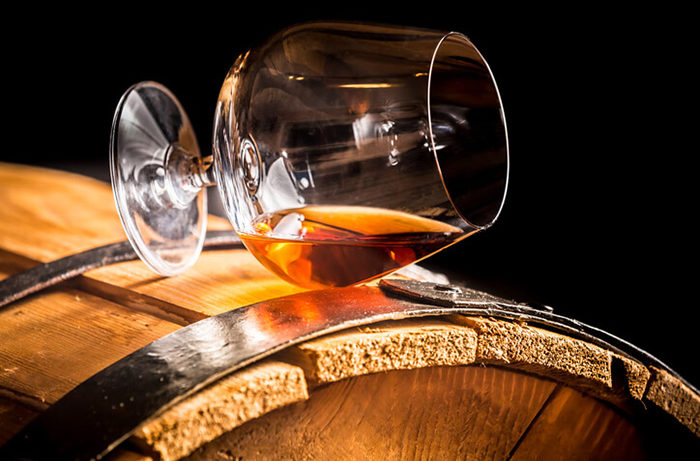Cognac distillates are called base spirits, from which such a drink beloved by many men is made through blending.
Since the name of the final product is linked historically and legally to the French province of Cognac on the Chantard River, the true cognac distillates are produced exclusively there. Otherwise, the right to appeal (French appellation) will be lost - the regulatory framework for the cultivation of certain grape varieties and wine production with strict adherence to the technology installed in this territory. This refers to the concept of authenticating the name of a drink.
But in our country, where cognac has become indispensable on holiday tables, excellent source codes are produced for it. So what is cognac distillate?
What history teaches
More often than not, history teaches that randomness leads to discoveries. Most likely, it was by accident, and not intentionally, that cognac was once created long ago. There is no consensus among historians as to who came up with the idea of double distillation of fermented dry wine.
Let’s try to find out from what and with what modern technologies this rich amber-golden drink is made. First of all, we will analyze what it is - cognac distillate, because it is he who is the raw material for the popular drink.
Manufacturing steps
The start is grape harvesting. For the manufacture of cognac wine materials use special, special grape varieties. This is mainly white fole and Colombard.
An important point is the time - it is legally approved that the extraction of grape berries for the production of cognac drinks can be done only until March 31. So the winemakers have enough work.
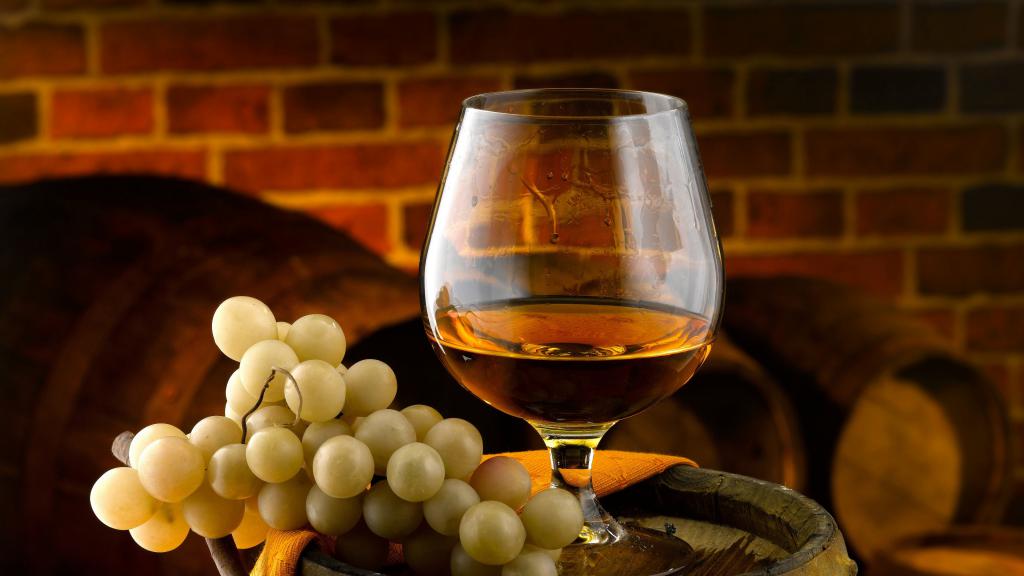
Then the wine material is infused in oak barrels. Sometimes the fermentation process lasts up to five months, and then double distillation follows.
But there are nuances here - not all the material that has gone through the distillation process will go into business. During distillation, wine material is maximally cleaned of volatile impurities and fusel oils, which increases the strength of the base drink. There remain volatile acids, higher alcohols, esters - that is what cognac distillate means.
Ultimately, out of 10 liters of the original wine material comes out no more than 1 liter of cognac distillate.
Spin and Ferment
Here is an example of the production of a base for cognac, or how cognac distillate is made in modern factory conditions.
The extraction of wine material for cognac production takes place in special presses, where grapes are only crushed by pressure, but not completely wrung out so as not to crush the bones. Such pressing devices are intended only for partial extraction, unlike wine presses.
This is followed by a fermentation process, which is clearly controlled, since at the end a dry wine material with a strength of about 9 degrees is obtained.
Distillation
What is this - cognac distillate - can be understood at subsequent stages of production, since the distillation of dry wine occurs twice before the drink reaches the necessary strength. The distillation takes place exclusively through the Charente distillation cube (French alambic charentais) - a system of a heating boiler, hood, bypass pipe, a container for heating wine material before distillation and a cooling coil.
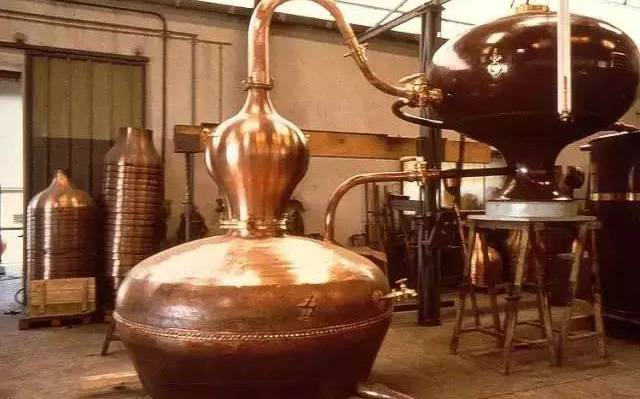
Everything is made of copper, as this material has a high degree of resistance to oxidation and excellent thermal conductivity.And these are factors that actively influence the final composition of cognac distillate.
As a result of the first distillation, the strength of cognac semi-finished product reaches 23-32 degrees, it has an opaque white color and is called bruy (fr. Brouil-lis). There is a separation of components and a fundamental change in taste characteristics. Ethyl alcohol and some volatile compounds are evaporated as much as possible from the wine material.
After the second distillation, an excellent cognac distillate with a strength of up to 70% is obtained. In the process, winemakers remove the first and final epaulettes. There remains the so-called "body", which is used as a base for the manufacture of cognac. That's what brandy distillate is.
Excerpt
An ideal capacity for long aging cognac is considered an oak barrel without a single metal part. And the older the better. Only oak containers contain a minimum of tarry substances. The chemical-physical processes taking place over many years gradually form the organoleptic and aromatic properties of cognac.
Oak substances saturate cognac drinks with color, add a unique aroma and flavor notes. And under the influence of oxygen, alcohols are oxidized and become soft.
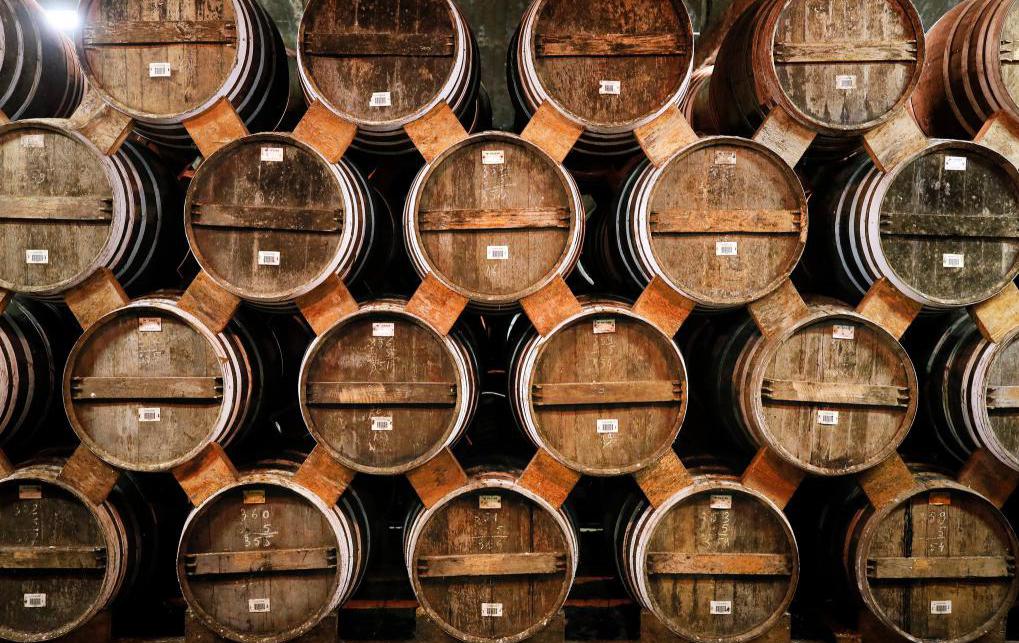
To get cognac from cognac distillate, even barrels must first be prepared correctly:
- Twice with an interval of 3-4 days they are soaked in cold water.
- Then steamed for half an hour with hot steam. This slightly changes the chemical composition of wood and makes it more loose, which positively affects the maturation process of cognac spirits.
- Rinse with hot and cold water.
What is better cognac alcohol or cognac distillate? The answer is simple, as these are two product names for the double distillation of wine material.
Storage Nuances
The storage conditions influence the quality of cognac distillate during storage - temperature and humidity level in the cellar. It depends on the level in the cellar or the level of the cellar itself. The higher the distillate barrel, the higher the temperature and lower the humidity.
In dry conditions (40-60% moisture), water evaporates to a greater extent, and the alcohol concentration increases.
Wet cellars (about 100%) make the drink soft, since here the evaporation of water slows down and the spirituality decreases.
These nuances help craftsmen to get a unique taste of high quality as a result.

Evaporated alcohols are said to be “the share of angels.” And it averages about 2% of the production volume per year.
Taste differences cognac
The time spent on cognac in barrels is called the aging period (French Vieillissement). The drink during maturation is saturated with color and aromas. Alcohols also evaporate, and the colorless cognac distillate adopts the rich color scheme of oak wood.
Extract of cognac spirits or cognac distillates is divided into three significant periods:
- The first period lasts 3-5 years. Extract of 70% cognac distillate occurs in new oak barrels. The alcohol evaporates, the drink becomes softer and is actively saturated with a light woody aroma and acquires a golden hue.
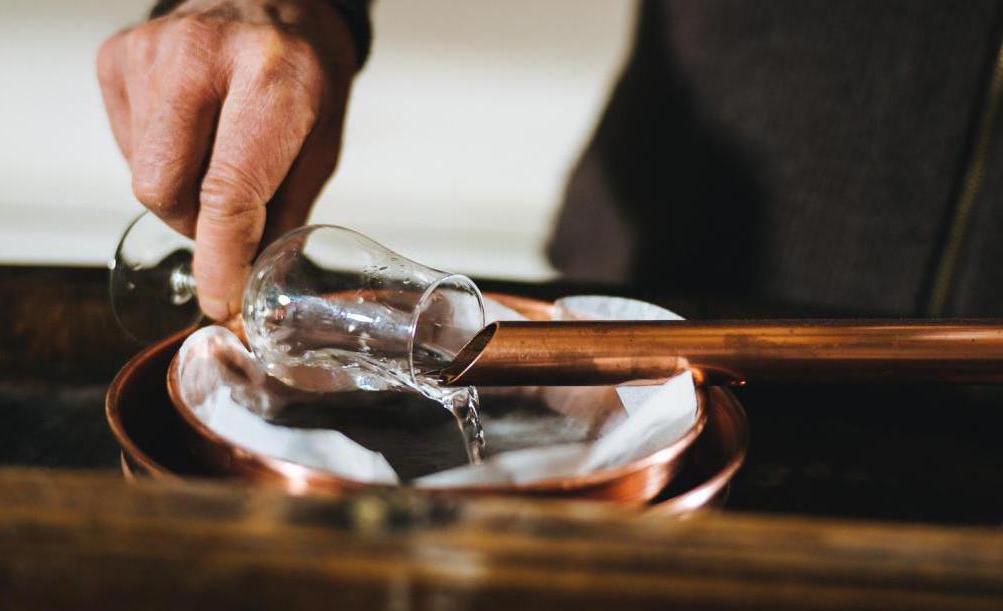
- The second period is 5-10 years. In these years, cognac spirits acquire a more saturated color. Alcohols are poured from new barrels into old ones, which gives new aromatic vanilla and floral notes to the product.
- At the third stage of 10-30 years, the drink acquires a resinous, chocolate tones, prune and almond aftertaste. Woody notes leave, giving way to floral-fruity. The alcohol content is reduced to 46%, and in return is acquired the burning ability and harmony of all components of the drink.
But cognac alcohol takes on color while it is aged in a new barrel for the first two years. The older the wood, the less it shares its color with cognac.
Blending brandy
Creating a unique blend of cognac spirits is considered the climax of the process.All nuances should be taken into account here, because absolutely identical cognac distillates never work. New drinks are created annually. In their manufacture, from 10 varieties of cognac spirits are used. Unique cognacs containing more than 100 different distillates are also created! But there are also vintage types of cognacs - they contain the only type of cognac spirit.

The creative process ends with the addition of fragrant water, sugar or caramel syrup, ionized water. Then the cognac is sent for rest for a period of three months to one year. And only now the drink is ready for bottling, which previously washed with brandy spirits.
